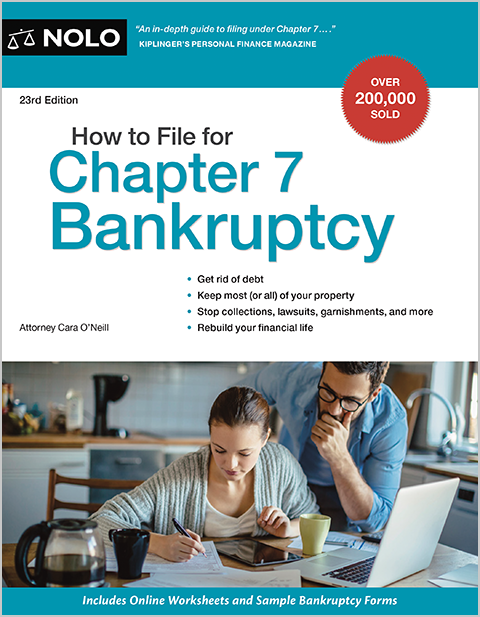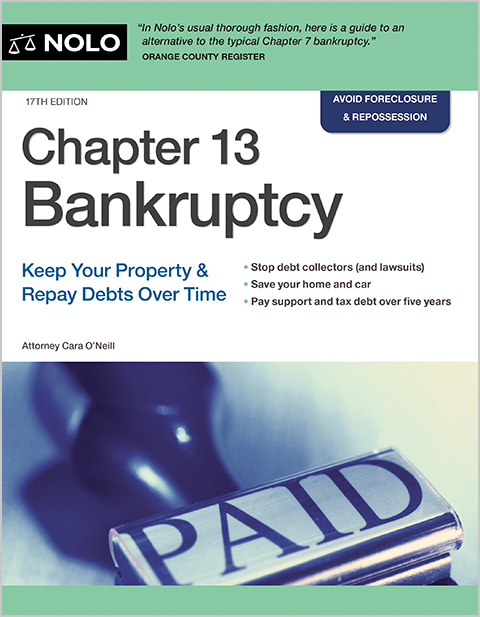In Chapter 7 bankruptcy, a trustee will abandon nonexempt property when liquidation costs exceed the benefits to creditors, which sometimes allows the filer to keep the property.
In Chapter 7 bankruptcy, the bankruptcy trustee can take and sell your nonexempt property to repay your unsecured creditors. However, sometimes the bankruptcy trustee will "abandon" nonexempt property, meaning the trustee decides not to take the property. In that case, you get to keep it, or if the property is secured, the creditor can proceed with foreclosure or repossession.
What Is Nonexempt Property in Chapter 7 Bankruptcy?
After the initial bankruptcy filing, all of the debtor's nonexempt property becomes part of the bankruptcy estate. The property that a debtor is allowed to keep, or "exempt" property, is then excluded. (11 U.S.C. § 522.)
How much property you can protect will depend on where you live because exemption amounts vary by state. Even so, most states have a homestead exemption that protects your residence up to a specific dollar amount.
Ordinary household goods, pensions and retirement accounts, your vehicle up to a stated value, clothes, and public benefits such as Social Security and unemployment are also usually exempt.
Why Would a Trustee Abandon Nonexempt Property?
If selling an asset you can't exempt wouldn't bring enough for creditors—for example, perhaps nothing would be left after paying a lender's lien and your exemption amount—the trustee would likely abandon the property. (11 U.S.C. § 554.) Abandonment can also occur when the property is hard to sell or when the sale costs would consume too much of the proceeds.
Costs to Sell the Property
A Chapter 7 trustee must pay for transportation, storage, appraisal, and sale costs from the proceeds before distributing funds to creditors. A commission on sales is also part of the trustee's payment. If these costs exceed the net value available for creditors, abandonment makes economic sense.
Example. Rita owns a car that has a replacement value of $6,000. She owes $1,500 to her car loan lender, and her state allows her to exempt $3,000 in car equity. If the trustee were to sell the car at auction, the trustee would incur about $2,000 in costs to pick up, store, and auction the car, and would collect a $500 commission. After deducting $1,500 (which goes to the lender), $3,000 (which the trustee pays to Rita), $2,000 (costs of sale), and $500 (the trustee's commission) from the $6,000 sale price, nothing would remain for Rita's creditors. The trustee would likely abandon the car.
Upside-Down Secured Property
Property is "upside-down" when the secured debt exceeds the property's fair market value. This can occur with vehicle loans and declining real estate values. Since the secured lender's lien must be paid first, the trustee will abandon property if nothing is left for creditors.
Keeping Abandoned Property in Chapter 7
If the trustee abandons the property, you keep the property even though it's nonexempt. When property is abandoned and no lien encumbers it—for instance, there's no mortgage, car loan, or other unpaid financing in which the property serves as collateral—the property returns to you free and clear. You retain ownership just as you did before bankruptcy.
When Creditors Can Seize Property After Abandonment
For secured property, abandonment doesn't eliminate the creditor's lien or your payment obligations.
Example. Suppose you stopped making payments on your home, have a $100,000 mortgage, and the property's fair market value is $75,000. The trustee will most likely abandon the property, and the lender can proceed with foreclosure if you are behind on your payments.
Similarly, suppose a vehicle is abandoned and you're behind on payments. In that case, the lender would repossess the car unless you continue making payments. Some debtors can enter into a reaffirmation agreement with the lender to keep the financed property after bankruptcy.
Procedure for Abandoning Property
A bankruptcy trustee abandons property by following the proper notice requirement, which involves filing a Notice of Abandonment. The notice allows others to object if they believe the property should remain in the bankruptcy estate.
Notice of Abandonment Filing
Filing this notice is helpful because it lets all the creditors know where they stand and what to expect from the bankruptcy. It provides clarity and allows secured creditors to take appropriate action regarding their collateral.
By filing this notice, the trustee formally returns control of the property to the debtor and to any other creditors who may have an interest in it.
Deemed Abandonment Without Notice
Sometimes the trustee will abandon property without filing a Notice of Abandonment. If the trustee doesn't affirmatively abandon property, and it isn't otherwise administered, the property is deemed abandoned at the closing of the case. (11 U.S.C. § 554(c).)
The type of abandonment applies to property that the filer listed in the bankruptcy petition. It automatically reverts to the debtor upon case closure.
Can You Request That the Trustee Abandon Property?
Yes, anyone involved in the bankruptcy case can request that the trustee abandon specific property. (11 U.S.C. § 554(b).) You would file a motion with the bankruptcy court explaining why the property is burdensome or of inconsequential value to the estate. If the court agrees with you after a hearing, it will order the trustee to abandon the property.
Need More Help?
Did you know Nolo has made the law accessible for over fifty years? It's true, and we wholeheartedly encourage research and learning. However, online articles and resources can't address all bankruptcy issues and aren't written with the facts of your particular case in mind. The best way to protect your assets in bankruptcy is by hiring a local bankruptcy lawyer.
|
|

